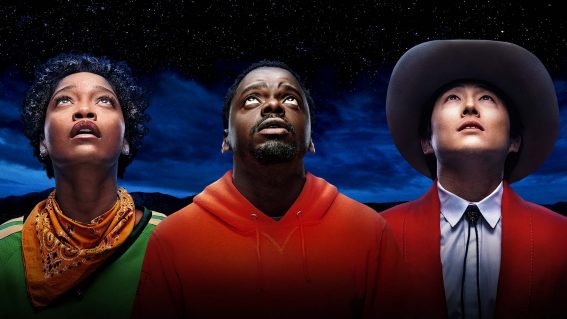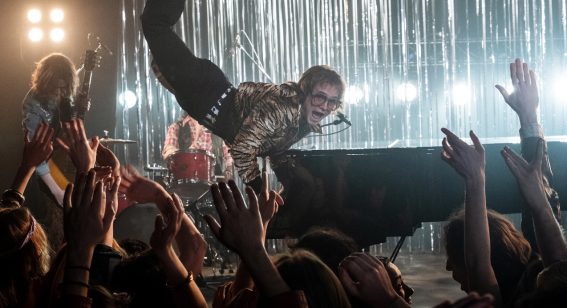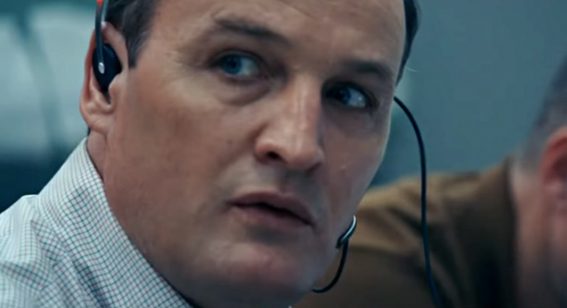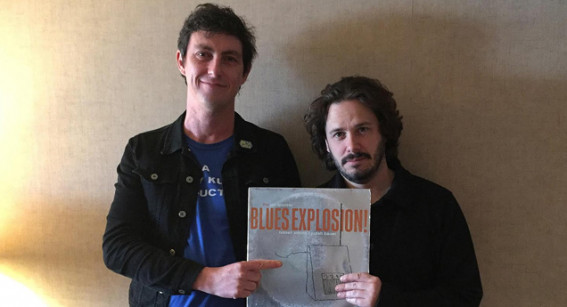Destroyer director Karyn Kusama on turning Nicole Kidman into a broken weapon

Director Karyn Kusama reunites with the writers of 2015’s The Invitation for cop thriller Destroyer, which is playing in select cinemas nationwide (find times and tickets). Nicole Kidman plays a police detective, broken and battle-hardened, who attempts to reconnect with the members of a gang she infiltrated as a young undercover cop—a past that continues to haunt her.
Tony Stamp talked to the filmmaker about the creative process and working with Nicole Kidman to construct a physically and mentally broken character.
FLICKS: After The Invitation, Jennifer’s Body, even going back to Aeon Flux, I felt like I had a sense of what a Karyn Kusama film was, which was kind of upended by Destroyer. What made you want to pursue this very grounded crime thriller as your next project?
KARYN KUSAMA: I think, for me, the totality of that character, that main character, Erin Bell, was really gripping to me, and there was something about the opportunity to make a film that really dug into a single character the way that this script did on the page. And in some respects, I understand what you’re saying about it seeming like a departure, but then when I think of my impulses creatively for my first film, Girlfight, I realise that there’s an alignment there between the two films, in that I was really interested in giving an audience an opportunity to just focus and stay with one character in a very intense, and sometimes, uncomfortable, way.
Almost full circle, in some ways, back to your first film.
Yeah, yeah. It took me forever to figure that out, but now that I’m having to think about the movie and talk about it, I realise that it was like I was returning to an instinct that interested me in movies in the first place.
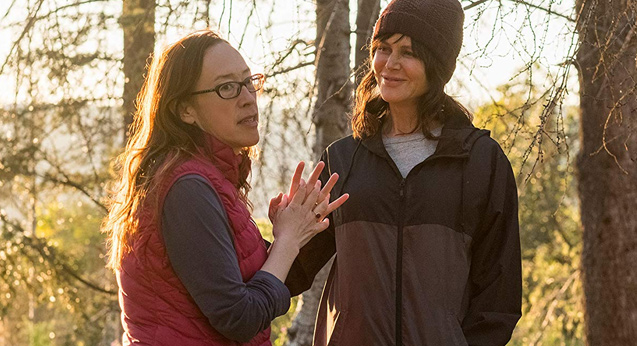
This is your third time directing a script written by Phil Hay and Matt Manfredi. Are they writing scripts with you in mind? What is your creative process like with those two guys?
When we first met, and they had written Aeon Flux, I think they were, and remain, highly in-demand writers for the studio system, and so I don’t think they could have anticipated that they would have been working with me. But The Invitation and Destroyer became kind of—I want to say—increasingly intertwined on a creative level. By the time they were writing Destroyer, they were essentially writing it with me in mind.
It was a great opportunity for me, as a director, to have an early, early series of conversations with Phil and Matt, in which they showed me their corkboard. I was able to be walked through an outline of the film and get a scene-by-scene breakdown before they had even written any scenes within the screenplay. So I was able to have this ongoing conversation with them about the things I’d like to prioritise, the way I’d like to see her, the way in which I would probably be gravitating toward certain material within the story.
It feels like it’s just increasingly organic between us. I’m also married to Phil.
Oh. I didn’t know that.
Yeah, I kind of buried the lead but I should have mentioned that. We got married after Aeon Flux.
I think, in a way, the process of making films, or developing films with other people, while that’s something I’m sure we’ll still do to some degree, what we’ve found is that we really work very, very well as a trio. Phil and Matt have their own creative system of bouncing ideas and being soundboards for each other. I’ve been lucky to feel like I can be just another part of a process of reflection and refraction back to each other in terms of our creative aims. I think what we’ve found over the years is just we’re very aligned, I would say, in our cinematic values, but we also like different things from each other. So that helps to create, I think, a pretty lively partnership among the three of us.
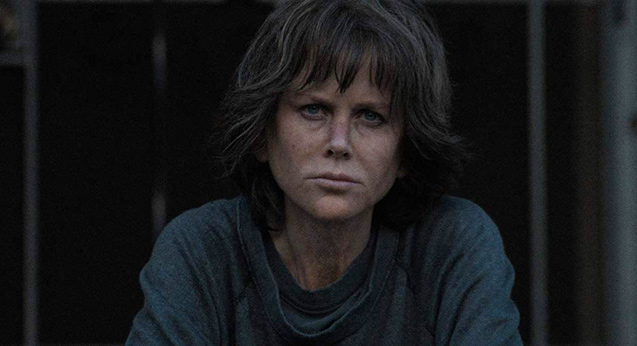
You’ve talked about Nicole Kidman’s character wearing her past on her face. Beyond her sort of physical transformation, which has rightly attracted a lot of attention, the character has a very distinctive look, from her haircut to the way she walks. What was the process like for shaping the character in that way? And at what stage did Nicole come on board to that?
Well, once we had a script that we were all happy with, we started talking about cast with agents, and funnily enough, Nicole got the script. She was probably one of the first people to get the script, actually. She kind of got it on her own because she is one of those highly unusual movie stars who just wants to read what’s out there, get a sense of what people are making, and sort of where the thematic concerns might be from film to film. So she approached us with a lot of interest in the role, and I was able to start a conversation with her, creatively, that was a lot less—I want to say—high pressure.
In some ways, we were feeling each other out and just trying to figure out if we’d make good collaborators. To be perfectly frank, as soon as I had that first conversation with her, I was like, “Oh, I’ve got to make this movie with her.” But that being said, it also meant that she was able to, early on, just give us some thoughts, give us some of the areas that she was most gravitating toward emotionally, and we could amplify something with that guidance from her.
It also allowed us to be thinking about a look for her, and a countenance for the character, that was more specifically designed with her in mind. One of the biggest things that was different, I think, than all of our original expectations or conceptions of the role—something we hadn’t taken into account—was the fact that Nicole is almost six feet tall. So that height and that stature, just her statuesque identity, we were interested in seeing what that looks like when it’s more like a bull in a china shop.
I was really interested in the idea of a person who is sort of physically breaking down. What does that look like in a tall, slender woman? And so it gives her this whole other kind of quality, as a performer, that I don’t think we’ve really seen before. It was really exciting to see her embody that broken physicality, and use her height and her long limbs less as kind of swan-like appendages, and more as unpredictable weapons. It was a really interesting thing to see how she used her physicality to help shape that character.
There are also scenes set in the past where she’s playing someone much younger than she actually is in real life. I was blown away by how young and fresh she looks in those scenes. Was that an important part of the character to hone in on as well?
Yeah. I think it was really important that we understand that she was a person who experienced a very full and startling spectrum of experiences, and that, as a younger woman, she had some hope; she had some playfulness. There was this kind of reckless energy to the character, and part of the story we were trying to tell was sort of… what breaks a person? What are the things that can happen to us that—I want to say—corrupt or degrade our souls? So it was important that we understand that there was a time where she wasn’t always broken and that the audience gets a little bit of access to that time when, even though she’s capable of making really catastrophically terrible choices, she still had this—I don’t know—misguided sense of hope that it was going to work out.
I have to hand it to Nicole. We really had to do some guesswork about what the difference is between those two time periods, as we were getting ready to shoot, and Nicole made it look so easy, in terms of embodying those two different physicalities, those two different mindsets. It’s only later, when I watch the movie with audiences, that I really realise what an accomplishment it is for her to just effortlessly occupy those two spaces. She’s such a formidable artist.
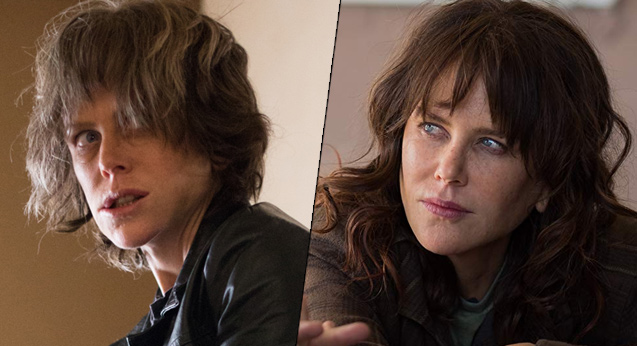
This is a film that doesn’t necessarily hold the audience’s hand. There’s a fractured timeline going back and forth, and you’re very careful in terms of what information you are revealing at certain times. Was that shaped in the edit, or was it all there on the page when you went into this?
It was all there in the script.
I mean, there were a couple of changes we made once we were cutting, that had to do with balance—I want to say—and sort of what the rhythm of cutting back to the past felt like. But I would say, for the most part, 80% or 90% of the way the film was structured is reflective of what the script was doing.
The idea was that there was always going to be this sense of the past intruding on her present, so that, ideally, we were in a kind of rhythmic experience of being in the present, and then suddenly sort of finding ourselves in the past, then back again, so that we understand that part of the character’s tortured psyche, that it comes from the fact that she really can’t move on from the past, and can’t accept, or take responsibility for, her mistakes in that past. It was important that we not have too long of a segment or sequences that take place in the present without finding ourselves back in that flashback world.
I sometimes hear about directors assembling mix tapes of films to get their cast and crew onto the sort of right wavelength. Did you have anything you were watching, prior to the shoot, to draw inspiration from?
It’s so funny. For this film, and I talked about it with Nicole, it wasn’t like we really looked at crime movies together as much as we thought about movies that had very compelling central characters.
In some respects, there was overlap with the genre. You could say that Dog Day Afternoon is a bank-heist-gone-wrong movie, but really, it’s such a study of Al Pacino’s character. And so we were looking at a movie like that, or a movie like Klute, which has such an incredible central performance from Jane Fonda. And from Nicole’s point of view, she felt it was more important to watch films like A Woman Under the Influence, that just studied a woman with such an intensity that she moves sort of out of being the object of the audience’s gaze and becomes the subject of the audience’s gaze.


